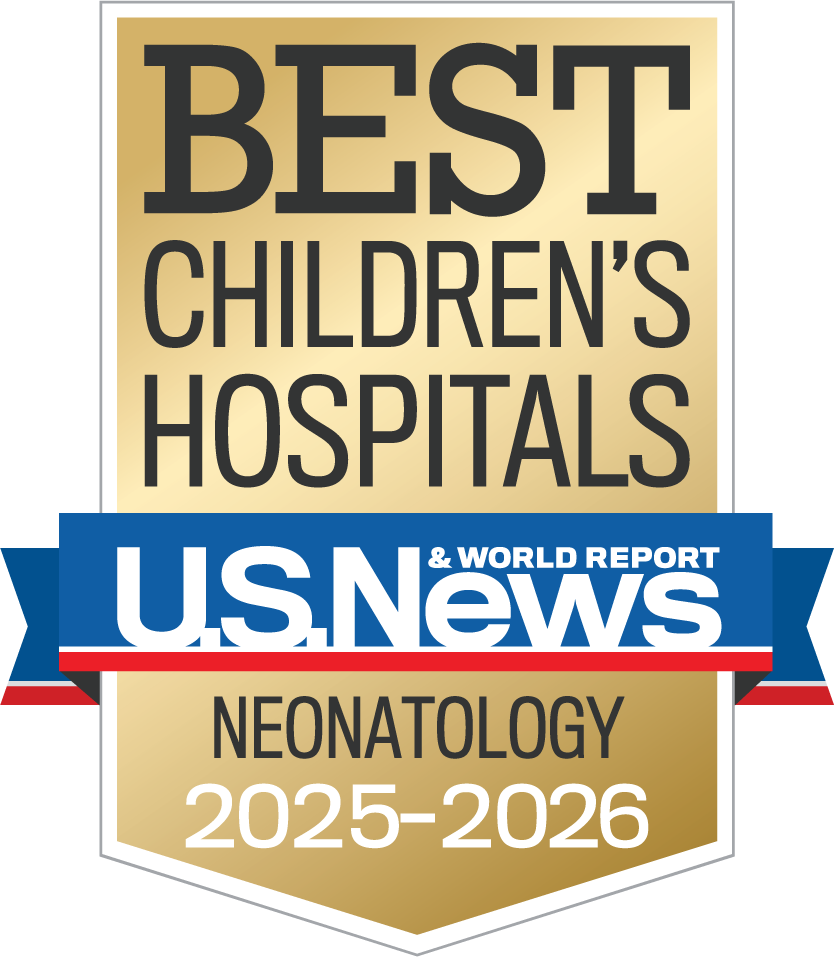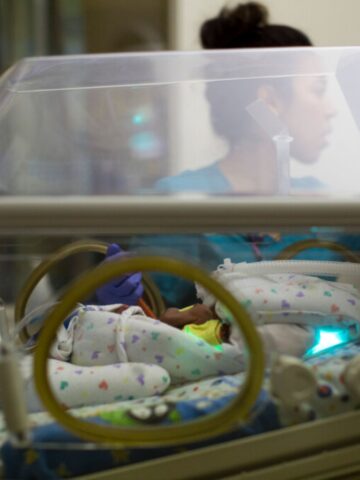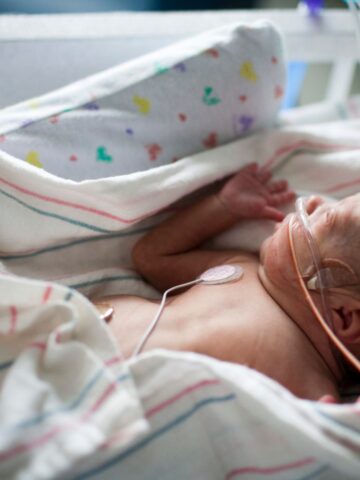Bridge Clinic Program provides smooth transition for NICU families, reduces readmissions
Families bringing babies home after a stay in the NICU often experience intense anxiety about caring for their infants. These issues can lead to lengthy NICU stays and high hospital readmission rates, putting stress on pediatricians, families, staff and resources.
The NICU Bridge Clinic Program at Children’s Health of Orange County (CHOC) is designed to bridge the gap between the hospital and home, making the transition easier through a co-management care approach.
“We saw a need to develop a bridge clinic for high-risk babies with medical conditions that require specialized developmental care regimens,” says Dr. Dilip Patel, neonatologist and medical director of the High-Risk Infant Follow-up Clinic and the Bridge Clinic at CHOC. “These are infants going home with special feeding requirements and supportive medical devices, such as gastrostomy, tracheostomy or nasogastric tubes.”
Dr. Patel, along with Dr. Vijay Dhar and Dr. Christine Bixby, longtime physician leaders in neonatology at CHOC, developed a plan for a bridge clinic that would set families up for the successful follow-up care of their infants at home. Since launching in August 2019, the Bridge Clinic Program has lowered the average length of stay in the NICU by five days, as well as set 30- and 45-day readmission rates on a downward trend.
Improving the patient experience
The goals of the Bridge Clinic are aligned with CHOC’s strategic values. These include:
- Decreasing costs.
- Improving overall quality of care.
- Improving the family experience and NICU care team satisfaction.
“Prior to the opening of the clinic, patients were discharged from the NICU with instructions to follow up with their pediatricians, but in many cases, these physicians were not equipped to take care of infants with very complex care needs,” says Tinoosh Eftekharian, MSN, RN, specialty clinic manager at CHOC. “Meanwhile, patients couldn’t see their specialist for four to six weeks or longer. Concerned parents would call the NICU. Now, we can provide additional support and follow-up care so families don’t need to go to the emergency department or be readmitted to the hospital.”
While certain factors, such as low birth weight, NG tubes or medication for drug withdrawal, qualify patients for the Bridge Clinic, there are no definitive criteria that infants must meet to be enrolled in the program.
“We have opened it up to any babies whom the neonatologist feels can benefit from the program,” Dr. Patel says. “If they end up not needing it, they can visit once and then be done. But we usually qualify patients for up to four visits, and we can extend that in select cases where additional follow-up care is necessary. Typically, most patients need one to two visits.”
A co-management approach to complex care
When the neonatologist feels that an infant is ready to be discharged from the NICU and transition into the Bridge Clinic, they immediately inform the pediatrician.
“The neonatologist typically connects with the pediatrician prior to discharge and collaborates with them,” Tinoosh says. “The majority of pediatricians are extremely grateful their patients have access to the program. But we first want to make sure that they are on board, so we have the conversation ahead of time.”
When visiting the Bridge Clinic, patients can meet with a neonatologist, a nurse coordinator, an occupational therapist, a registered dietitian and a medical assistant. A neurologist is available to meet with patients in the clinic twice per month.
The team focuses on several areas during visits:
- Ensuring the caregiver is using appropriate feeding strategies for safe oral feeding.
- Monitoring and managing infant weight gain.
- Providing focused, personalized education where needed, including medical equipment care, G tube care, baby basics and more.
“Often, we kept babies in the NICU longer because families needed more education on how to provide complex care at home,” Tinoosh says. “Now we can see the families in the Bridge Clinic to make sure they’re on the right path.”
Looking Ahead
Currently, the Bridge Clinic offers three half-day sessions per week, seeing four to five patients per session. With a 97% 48-hour fill rate and a no-show rate of only 9%, the team is planning to add another half-day session, with a long-term goal of offering whole-day sessions. Additional plans include offering services to more community hospitals and involving more subspecialists, such as GI and pulmonary specialists, allowing patients to consolidate multiple appointments into one.
“We have no limitation on the time we spend with families in the clinic,” Dr. Patel says. “There’s a lot of teaching that happens, as the information families receive at discharge can be overwhelming. That’s why this bridge is so important, and we want to keep growing as we move forward.”
Learn more about the NICU Bridge Clinic Program.

CHOC was named one of the nation’s best children’s hospitals for neonatology by U.S. News & World Report in its 2025-26 Best Children’s Hospitals rankings.




